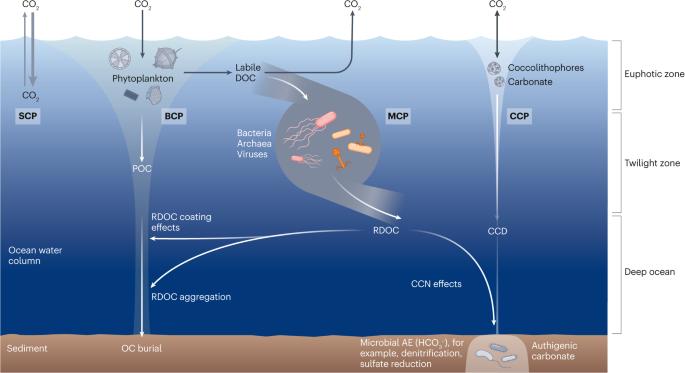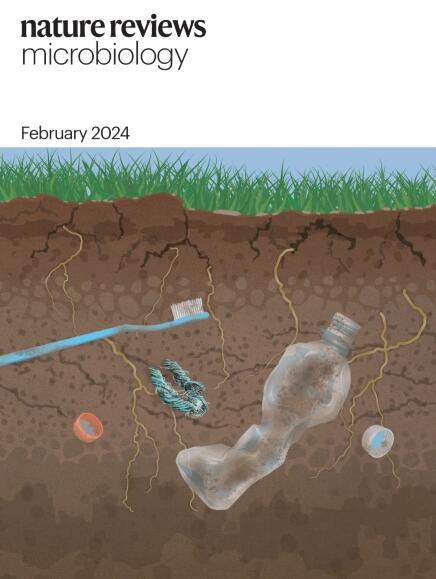微生物碳泵与气候变化
IF 69.2
1区 生物学
Q1 MICROBIOLOGY
引用次数: 0
摘要
在地球历史上,海洋一直是气候变化的调节器。其中一个关键机制是难溶解有机碳(RDOC)对碳库的调节作用,它可以在水体中储存几个世纪,也可以根据条件以二氧化碳的形式释放回大气中。RDOC 是通过被称为微生物碳泵(MCP)的大量微生物代谢和生态过程产生的。在此,我们回顾了与 MCP 相关过程的最新研究进展,包括 RDOC 的分布模式和分子组成、RDOC 化合物的复杂性与微生物多样性之间的联系、MCP 驱动的跨时空碳循环以及 MCP 对气候变化的响应。我们确定了 MCP 作用方面的知识差距和未来研究方向,特别是作为结合海洋负碳排放的生物和非生物碳泵机制的综合方法的关键组成部分。本文章由计算机程序翻译,如有差异,请以英文原文为准。


The microbial carbon pump and climate change
The ocean has been a regulator of climate change throughout the history of Earth. One key mechanism is the mediation of the carbon reservoir by refractory dissolved organic carbon (RDOC), which can either be stored in the water column for centuries or released back into the atmosphere as CO2 depending on the conditions. The RDOC is produced through a myriad of microbial metabolic and ecological processes known as the microbial carbon pump (MCP). Here, we review recent research advances in processes related to the MCP, including the distribution patterns and molecular composition of RDOC, links between the complexity of RDOC compounds and microbial diversity, MCP-driven carbon cycles across time and space, and responses of the MCP to a changing climate. We identify knowledge gaps and future research directions in the role of the MCP, particularly as a key component in integrated approaches combining the mechanisms of the biological and abiotic carbon pumps for ocean negative carbon emissions. In this Review, Jiao, Robinson and colleagues examine recent advances related to the microbial carbon pump, exploring its role in the carbon cycle and climate change, and proposing future research directions and approaches to ocean negative carbon emissions.
求助全文
通过发布文献求助,成功后即可免费获取论文全文。
去求助
来源期刊

Nature Reviews Microbiology
生物-微生物学
CiteScore
74.00
自引率
0.50%
发文量
149
审稿时长
6-12 weeks
期刊介绍:
At Nature Reviews Microbiology, our goal is to become the leading source of reviews and commentaries for the scientific community we cater to. We are dedicated to publishing articles that are not only authoritative but also easily accessible, supplementing them with clear and concise figures, tables, and other visual aids. Our objective is to offer an unparalleled service to authors, referees, and readers, and we continuously strive to maximize the usefulness and impact of each article we publish. With a focus on Reviews, Perspectives, and Comments spanning the entire field of microbiology, our wide scope ensures that the work we feature reaches the widest possible audience.
 求助内容:
求助内容: 应助结果提醒方式:
应助结果提醒方式:


